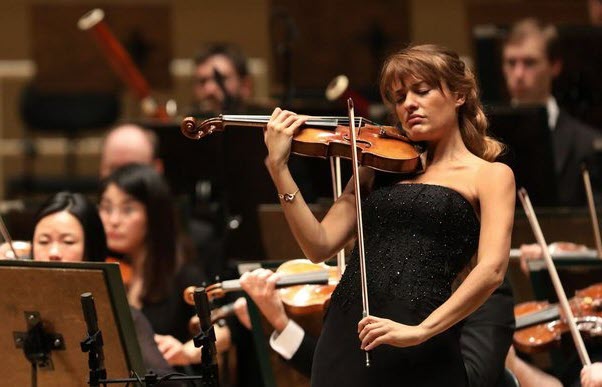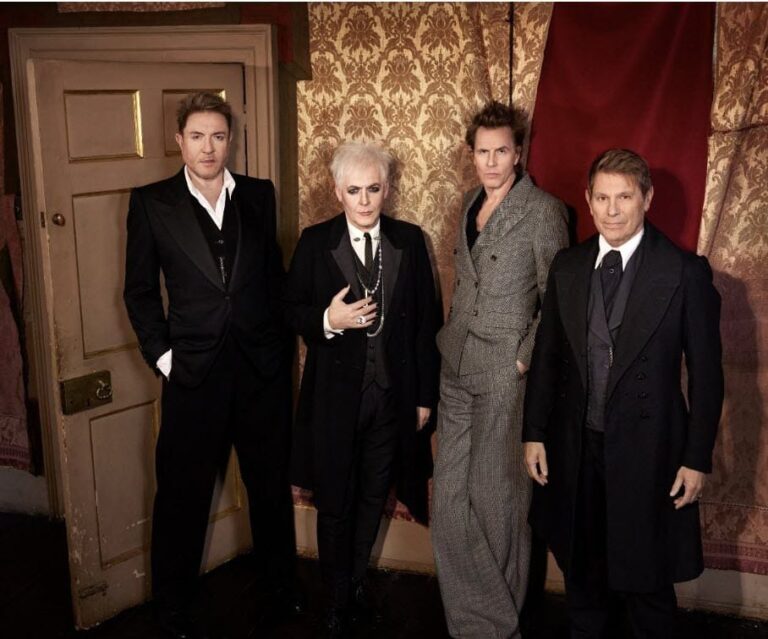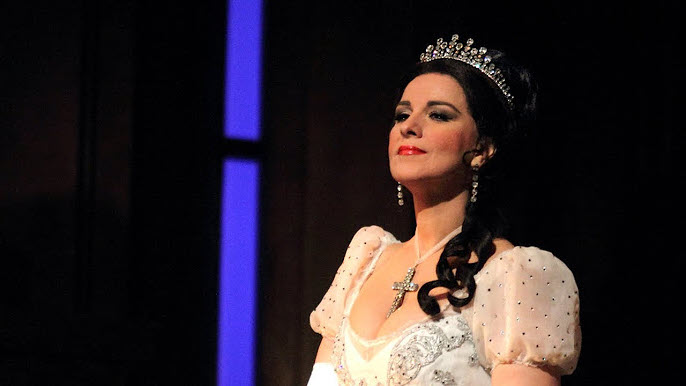Unlock the Ultimate Classical Music Playlist: Discover the 15 Greatest Masterpieces of All Time!
Classical music, with its rich history spanning centuries, continues to captivate audiences worldwide with its timeless beauty and profound emotional depth. In this exploration of the top 15 best classical music pieces of all time, we embark on a journey through masterpieces that have stood the test of time, transcending generations and cultural boundaries. From the majestic symphonies of Ludwig van Beethoven to the intimate chamber works of Wolfgang Amadeus Mozart, each composition on this esteemed list embodies the pinnacle of human creativity and expression. These pieces have not only shaped the course of musical history but have also left an indelible mark on the collective consciousness of humanity.
In this curated selection, we delve into the sheer diversity of classical music, encompassing a wide range of styles, genres, and periods. From the intricate counterpoint of Johann Sebastian Bach to the lush orchestral textures of Pyotr Ilyich Tchaikovsky, each piece offers a unique glimpse into the vast tapestry of classical repertoire. Whether evoking feelings of joy, sorrow, or awe-inspiring grandeur, these compositions resonate with listeners on a profound level, stirring the soul and igniting the imagination. Join us as we embark on a journey through the top 15 best classical music pieces of all time, celebrating the enduring legacy of these extraordinary works of art.
1. Gymnopedies by Erik Satie
Erik Satie’s Gymnopédies stand as timeless jewels in the crown of classical music, captivating audiences for over a century with their serene beauty and haunting simplicity. Composed in the late 19th century, these three short piano pieces are imbued with a delicate melancholy that speaks to the soul.
Gymnopédie No. 1, with its hypnotic melody and gentle rhythm, casts a spell of introspection, transporting listeners to a realm of tranquil contemplation. Satie’s use of sparse harmonies and ethereal textures creates a sense of weightlessness, as if floating in a dreamlike reverie.
Gymnopédie No. 2 exudes a bittersweet elegance, its graceful melodies intertwining with subtle harmonic shifts to evoke a sense of longing and nostalgia. Each note seems to linger in the air, leaving an indelible impression on the heart.
Gymnopédie No. 3, perhaps the most famous of the set, enchants with its wistful melody and delicate grace. Its understated beauty and emotional depth have made it a beloved favorite among listeners worldwide.
Together, the Gymnopédies form a masterpiece of understated elegance and profound emotion, earning their place as one of the most popular and enduring classical music pieces of all time.
2. Nuages gris by Franz Liszt
Franz Liszt’s “Nuages gris” (Gray Clouds) stands as a haunting testament to the Romantic era’s exploration of emotional depth and atmospheric expression. Composed in 1881 towards the end of Liszt’s prolific career, “Nuages gris” is a solo piano piece that captures the essence of melancholy and introspection.
The piece opens with a somber and desolate atmosphere, as if evoking the vast expanse of gray clouds looming overhead. Liszt’s use of dissonance and chromaticism creates an unsettling tension, mirroring the turbulent emotions often associated with gray skies and brooding weather.
As the music unfolds, it weaves a narrative of introspection and contemplation, inviting listeners to journey through the inner landscape of the soul. Moments of profound stillness alternate with fleeting bursts of intensity, reflecting the ebb and flow of emotional turmoil.
Despite its brevity, “Nuages gris” leaves a lasting impression with its evocative power and emotional depth. Liszt’s mastery of pianistic technique and his ability to convey profound emotion through music are on full display in this hauntingly beautiful composition.
Through its exploration of mood and atmosphere, “Nuages gris” stands as a testament to Liszt’s genius and remains a cherished gem in the repertoire of classical piano music.
3. Nessun dorma by Giacomo Puccini
Giacomo Puccini’s “Nessun Dorma” from his opera “Turandot” is a triumphant aria that has transcended the confines of the opera house to become one of the most iconic and beloved pieces of classical music. Written in 1924, “Nessun Dorma” is the climactic aria of the opera, sung by the Prince of Tartary as he declares his love for Princess Turandot and vows to win her hand, even at the risk of death.
The aria opens with a stirring orchestral introduction, building anticipation and setting the stage for the tenor’s powerful entrance. As the tenor sings the famous aria, his voice soars with passion and intensity, conveying both the character’s determination and vulnerability.
“Nessun Dorma” is characterized by its sweeping melodic lines, lush orchestration, and dramatic crescendos, all of which combine to create a sense of grandeur and emotional depth. Puccini’s masterful use of melody and harmony heightens the emotional impact of the aria, capturing the essence of love, bravery, and sacrifice.
The aria reaches its climax with the famous high B note, symbolizing the Prince’s unwavering resolve in the face of adversity. As the music swells to its triumphant conclusion, “Nessun Dorma” leaves audiences spellbound, captivated by its beauty and power.
With its unforgettable melody and stirring lyrics, “Nessun Dorma” has become synonymous with passion, perseverance, and the triumph of the human spirit, earning its place as one of the most popular and enduring pieces of classical music of all time.
4. Swan Lake by Pyotr Ilyich Tchaikovsky
Pyotr Ilyich Tchaikovsky’s “Swan Lake” is a timeless masterpiece that has enchanted audiences since its premiere in 1877. This ballet, with its captivating score and timeless story, remains one of the most beloved and enduring works of classical music.
Set to Tchaikovsky’s evocative music, “Swan Lake” tells the tragic tale of Odette, a princess transformed into a swan by an evil sorcerer’s curse, and Prince Siegfried, who falls in love with her. The ballet’s score is a symphonic tour de force, brimming with lush melodies, stirring harmonies, and memorable leitmotifs that capture the drama and emotion of the story.
From the enchanting “Swan Theme” to the exhilarating “Dance of the Little Swans” and the passionate “Black Swan Pas de Deux,” Tchaikovsky’s music brings the characters and the world of “Swan Lake” to life with breathtaking beauty and emotional depth.
But it’s not just the music that makes “Swan Lake” a masterpiece; it’s also the choreography, the costumes, and the sets that contribute to its enduring appeal. From the graceful movements of the swans to the dramatic confrontations between good and evil, every aspect of the ballet is meticulously crafted to create a magical and immersive experience for audiences.
Over a century after its premiere, “Swan Lake” continues to captivate audiences around the world with its timeless story, exquisite music, and breathtaking artistry, solidifying its place as one of the greatest classical music pieces of all time.
5. Brandenburg Concertos by J.S. Bach
Johann Sebastian Bach’s “Brandenburg Concertos” are a collection of six instrumental works that epitomize the pinnacle of Baroque music. Composed in 1721 and dedicated to Margrave Christian Ludwig of Brandenburg-Schwedt, these concertos showcase Bach’s mastery of composition and his innovative approach to orchestration.
Each concerto within the collection is a testament to Bach’s genius, featuring a diverse array of instrumental combinations and musical styles. From the majestic grandeur of the First Concerto’s trumpet fanfares to the playful exuberance of the Third Concerto’s string ensemble, each piece presents a unique and captivating musical journey.
What sets the “Brandenburg Concertos” apart is not only their technical brilliance but also their spirit of invention and exploration. Bach pushes the boundaries of musical form and structure, experimenting with contrapuntal techniques, harmonic complexity, and instrumental virtuosity to create music that is both intellectually stimulating and emotionally compelling.
Despite their diversity, the “Brandenburg Concertos” are united by their sheer beauty and craftsmanship. Bach’s intricate counterpoint, sublime melodies, and impeccable craftsmanship shine through in every movement, captivating listeners with their richness and depth.
As a collection, the “Brandenburg Concertos” represent a high point in Bach’s illustrious career and stand as a testament to the enduring power and beauty of his music. With their timeless appeal and universal acclaim, these concertos continue to inspire and delight audiences around the world, securing their place as some of the greatest classical music pieces of all time.
6. Adagio for Strings by Samuel Barber
Samuel Barber’s “Adagio for Strings” is a profound and emotionally stirring masterpiece that has left an indelible mark on the classical music landscape since its composition in 1936. Originally part of his String Quartet, Op. 11, Barber later adapted the second movement into a standalone piece for string orchestra, which has become one of the most iconic and revered works in the orchestral repertoire.
The “Adagio for Strings” is characterized by its achingly beautiful melody, soaring harmonies, and profound sense of longing and introspection. From its haunting opening notes to its climactic peaks and moments of quiet contemplation, the music carries listeners on an emotional journey that is both deeply personal and universally resonant.
Barber’s genius lies in his ability to convey a vast range of emotions with the utmost simplicity and clarity. Through the sheer power of melody and harmony, he captures the depth of human experience, from profound sorrow and anguish to transcendent beauty and hope.
The “Adagio for Strings” has been performed and recorded countless times, both in its original string quartet form and in its orchestral arrangement, cementing its status as one of the most enduring and beloved pieces of classical music. Its timeless appeal and universal themes continue to touch the hearts and souls of audiences around the world, making it a true masterpiece of the orchestral repertoire.
7. Flight of the Bumblebee by Nikolai Rimsky-Korsakov
Nikolai Rimsky-Korsakov’s “Flight of the Bumblebee” is a dazzling and virtuosic orchestral interlude from his opera “The Tale of Tsar Saltan,” composed in 1899-1900. This brief yet exhilarating piece has become one of the most recognizable and iconic works in the classical music canon.
“Flight of the Bumblebee” depicts the frenetic and agile flight of a bumblebee with its rapid, intricate, and buzzing melody. Rimsky-Korsakov’s orchestration is a tour de force, with the music mimicking the erratic movements of the insect as it darts and weaves through the air.
The piece is known for its technical challenges, requiring exceptional skill and agility from the soloist or ensemble performing it. With its lightning-fast tempo and dizzying runs, “Flight of the Bumblebee” is a thrilling showcase of virtuosity and precision.
Despite its brevity, the piece is brimming with energy and excitement, leaving listeners breathless as they are swept away by its whirlwind of sound. Its infectious melody and exhilarating pace have made it a favorite among audiences and performers alike, earning it a permanent place in the repertoire of orchestras and soloists around the world.
“Flight of the Bumblebee” remains a beloved and iconic work, captivating audiences with its brilliance, wit, and sheer exhilaration. Its enduring popularity and universal appeal make it a true gem of classical music.
8. William Tell Overture by Gioachino Rossini
Gioachino Rossini’s “William Tell Overture” is a thrilling and iconic composition that has become synonymous with epic adventure and triumph. Composed in 1829 as part of his opera “William Tell,” the overture has since transcended its operatic origins to become one of the most recognizable and beloved pieces in the classical music repertoire.
The “William Tell Overture” is divided into four distinct sections, each depicting a different aspect of the opera’s story. It opens with a serene and pastoral depiction of the Swiss countryside, featuring a beautiful melody played by the strings and woodwinds. This tranquil scene is abruptly interrupted by the famous “storm” section, characterized by swirling strings and thunderous percussion, depicting a tempestuous mountain storm.
The mood shifts once again as the overture transitions into the third section, which features one of the most iconic melodies in classical music: the “Lone Ranger” theme. This stirring fanfare, played by the brass section, evokes the image of the heroic William Tell riding into battle.
Finally, the overture concludes with a triumphant and exhilarating finale, as the music builds to a glorious climax, punctuated by triumphant brass fanfares and thunderous percussion.
With its vivid imagery, stirring melodies, and thrilling orchestration, Rossini’s “William Tell Overture” has captivated audiences for generations, earning its place as one of the most popular and enduring works in the classical music canon. Its timeless appeal and universal recognition make it a true masterpiece of orchestral music.
9. Canon in D by Johann Pachelbel
Johann Pachelbel’s “Canon in D” is a timeless masterpiece of Baroque music that has captured the hearts of listeners for centuries. Composed around 1680, this enchanting piece for three violins and basso continuo is renowned for its mesmerizing beauty and elegant simplicity.
At the heart of the “Canon in D” is its captivating melody, which unfolds with a graceful and hypnotic rhythm. Built upon a repeating bass line, the canon gradually layers multiple voices, creating a rich and intricate tapestry of sound. The interplay of melodies creates a sense of depth and continuity, drawing listeners into its enchanting embrace.
Pachelbel’s genius lies in his ability to craft a piece that is both structurally sophisticated and emotionally resonant. Despite its seemingly straightforward form, the “Canon in D” exudes a profound sense of serenity and introspection, inviting listeners to immerse themselves in its tranquil beauty.
Over the centuries, the “Canon in D” has become a beloved favorite for weddings, graduations, and other special occasions, thanks to its timeless appeal and universal charm. Its enduring popularity is a testament to Pachelbel’s gift for melody and his ability to create music that speaks to the soul.
With its exquisite beauty and timeless elegance, Pachelbel’s “Canon in D” remains one of the most cherished and beloved pieces in the classical music repertoire, continuing to inspire awe and admiration in listeners of all ages.
10. Ride of the Valkyries by Richard Wagner
Richard Wagner’s “Ride of the Valkyries” is a powerful and exhilarating orchestral piece that has become one of the most iconic and recognizable works in the classical music canon. Composed as part of his opera “Die Walküre” (The Valkyrie), which premiered in 1870, this thrilling composition captures the drama and intensity of the opera’s legendary battle scene.
The “Ride of the Valkyries” begins with a thunderous fanfare, heralding the arrival of the Valkyries, warrior maidens who carry fallen heroes to Valhalla. The music brims with energy and excitement as the Valkyries gallop across the sky on their winged horses, their fierce cries echoing through the air.
Wagner’s orchestration is nothing short of spectacular, with soaring melodies, driving rhythms, and dramatic brass flourishes that convey a sense of urgency and power. The relentless forward momentum of the music propels listeners into the heart of the action, evoking the chaos and intensity of battle.
Despite its dramatic subject matter, the “Ride of the Valkyries” is also imbued with a sense of exhilaration and triumph. As the Valkyries soar triumphantly through the sky, the music swells to a glorious climax, filling listeners with a sense of awe and wonder.
With its thrilling energy and majestic grandeur, Wagner’s “Ride of the Valkyries” remains one of the most electrifying and unforgettable pieces in the orchestral repertoire. Its iconic melody and epic scope continue to captivate audiences around the world, cementing its status as a true masterpiece of classical music.
11. Moonlight Sonata by Ludwig van Beethoven
Ludwig van Beethoven’s “Moonlight Sonata,” officially known as Piano Sonata No. 14 in C-sharp minor “Quasi una fantasia”, Op. 27, No. 2, is a profound and introspective work that has captivated audiences since its composition in 1801. This iconic sonata is divided into three movements, with the first movement, Adagio sostenuto, being the most famous.
The opening movement of the “Moonlight Sonata” is characterized by its hauntingly beautiful melody and tranquil atmosphere. Beethoven’s use of a simple yet evocative chord progression, combined with delicate arpeggios and a soft dynamic, creates a sense of ethereal serenity, reminiscent of moonlight reflecting on calm waters.
As the sonata progresses, the second movement, Allegretto, introduces a contrasting mood, with a lively and playful rhythm that provides a welcome contrast to the introspective beauty of the first movement. This middle movement serves as a delightful interlude before the sonata’s final movement.
The third movement, Presto agitato, returns to the somber mood of the opening movement, with its turbulent and impassioned expression. Beethoven’s use of rapid passagework, dramatic dynamics, and intense emotions convey a sense of turmoil and struggle, as if the pianist is grappling with inner demons.
Through its exploration of contrasting emotions and its innovative use of musical form, Beethoven’s “Moonlight Sonata” remains one of the most beloved and enduring works in the classical piano repertoire. Its timeless beauty and emotional depth continue to captivate and inspire audiences around the world, making it a true masterpiece of classical music.
12. The Marriage of Figaro by Wolfgang Amadeus Mozart
“The Marriage of Figaro,” composed by Wolfgang







